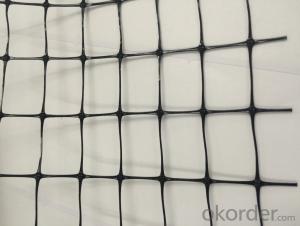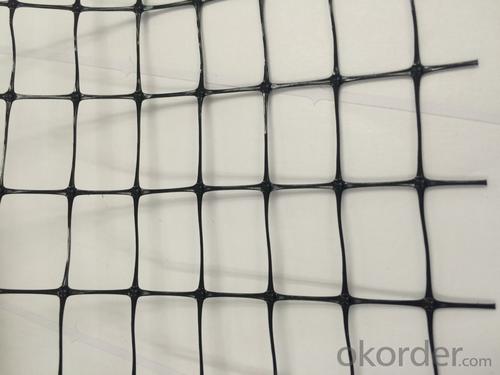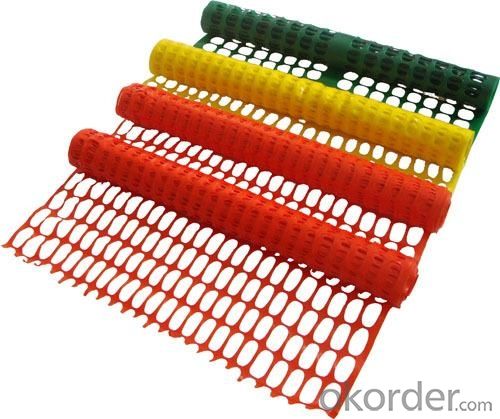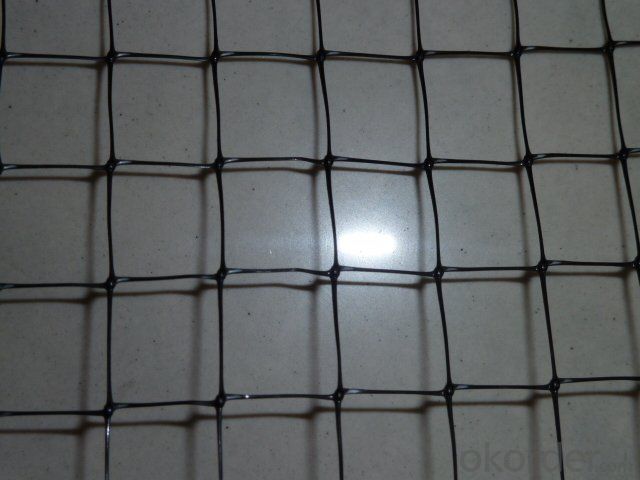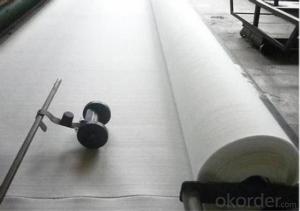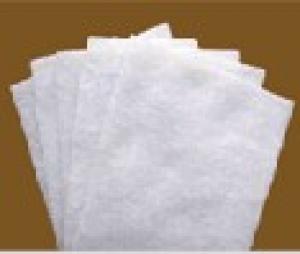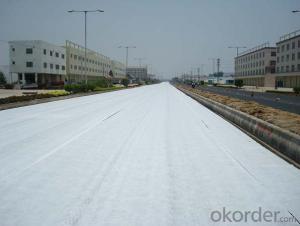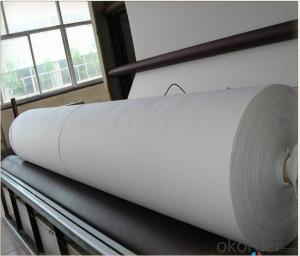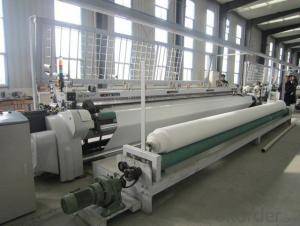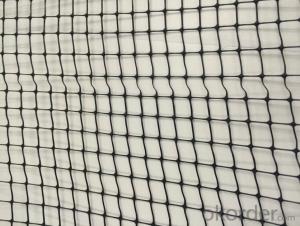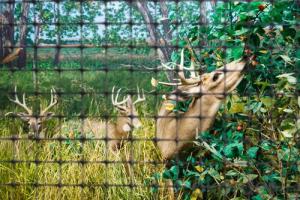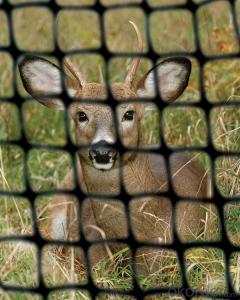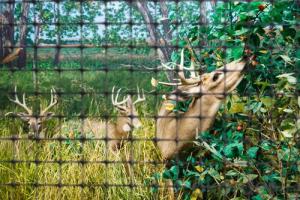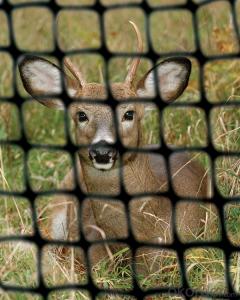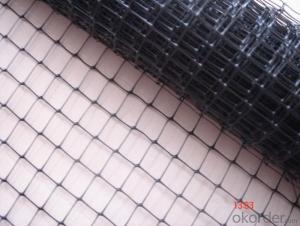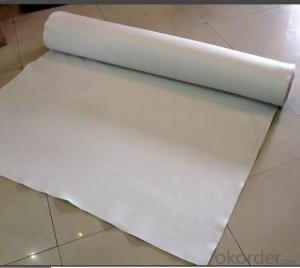Naue Geotextil PP/PE Plastic Deer Fence Netting / Poultry Netting
- Loading Port:
- China main port
- Payment Terms:
- TT OR LC
- Min Order Qty:
- 5000 m²
- Supply Capability:
- 1000000 m²/month
OKorder Service Pledge
OKorder Financial Service
You Might Also Like
Plastic netting plastic mesh breeding mesh
1. Plastic Plain Netting
Colour:white,black,blue and green, client's requirement.
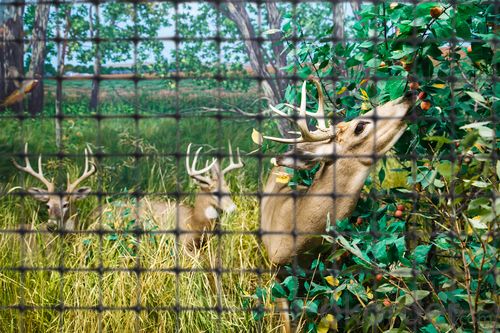
2. Deer fence introduction:
Deer fencing is a very high strength, lightweight, 3.6ft to 7.3ft high deer fence manufactured from high strength polypropylene BOP plastic netting. Deer have a tendency to forage over large areas and the cost effective deer fencing offers a very effective deer control barrier.
The deer fence is black, UV stabilised and rot proof and unobtrusive as it merges into it's background. Deer fencing is very quick and easy to erect and each roll weighs less than 15kg. The Deer Netting should be installed by battening to the fencing posts to ensure the mesh filaments are not damaged.
3. Features of the deer neeting fence:
Deer fence is easy to erect and install
Plastic netting has a mesh hole size of 0.06" ,0.08",0.18",0.19"
The BOP plastic netting has a high tensile strength
Plastic mesh is UV stabilized and chemical resistant
Deer fencing rolls are lightweight
Deer fencing is a very high strength, lightweight 1.8m high Deer fence manufactured from polypropylene.
Deer fencing net is supplied on a 100m long roll
4. Features:
1). Low cost, while has superior strength
2). Has anti-tearing and friction capability
3). Wide range of product availability, some other mesh sizes and weights can also produced as per customers' requirements.
5. Package/Payment/Delivery:
Package: Usually packed by rolls in plastic film bags with labels inside and then loosely loaded in the container
Payment: 30% in advance before manufacturing,and the balance upon the fax of B/L
Delivery: Within 40 to 60 days after receiving the deposit or L/C.
6. FAQ:
Q1: What is your minimum order quantity?
A:The minimum order quantity is 5000 ,but it is negotiable.
Q2:What is your payment terms?
A: T/T,Western Union,Paypal,L/C...
Q3:What is your delivery time?
A:Production time usually costs 2-20 days.
Waiting to cooperate with you!
- Q: What are the factors affecting the selection of geotextiles?
- The factors affecting the selection of geotextiles include the type and severity of the application, desired performance characteristics such as strength and filtration properties, site conditions such as soil type and slope stability, environmental considerations such as chemical resistance and durability, and cost-effectiveness.
- Q: What are the standards and regulations for geotextile products?
- The standards and regulations for geotextile products vary depending on the country and region. However, there are several widely recognized international standards that govern the manufacturing, testing, and performance requirements of geotextiles. These include standards from organizations such as the International Organization for Standardization (ISO) and the American Society for Testing and Materials (ASTM). These standards cover aspects such as strength, durability, permeability, and environmental compatibility. Additionally, various regulatory bodies may have specific requirements for geotextile products, particularly in the construction industry, to ensure their safe and effective use in specific applications.
- Q: What are the types of geogrids?
- Glass fiber geogrid, polyester fiber geogrid, 9080 fiberglass, polyester composite geotextile, steel-plastic composite geogrid, PP grille, one-way two-way stretch plastic geogrid,
- Q: How do geotextiles affect soil consolidation?
- Geotextiles can positively affect soil consolidation by improving the overall stability and load-bearing capacity of the soil. They can act as a separator, preventing the intermixing of different soil layers, which aids in achieving proper consolidation. Additionally, geotextiles can enhance drainage and prevent water buildup, reducing the risk of soil erosion and improving consolidation.
- Q: What are the benefits of using geotextiles?
- Geotextiles offer numerous benefits such as erosion control, soil stabilization, and drainage improvement. They help prevent soil erosion by acting as a barrier and holding soil particles in place. Geotextiles also stabilize the soil by distributing load forces, thus enhancing the strength and durability of structures. Additionally, they promote efficient drainage, allowing water to pass through while retaining soil particles. Overall, geotextiles provide cost-effective solutions for various civil engineering and environmental applications.
- Q: How to determine the nominal breaking strength of filament spunbonded nonwoven geotextile
- You can use a dedicated geotextile strong test machine detected.
- Q: Are geotextiles resistant to creep deformation?
- Yes, geotextiles are generally resistant to creep deformation. They are designed to have stable and long-term performance under sustained loads, minimizing the potential for creep.
- Q: Can geotextiles be used in coastal revetment projects?
- Yes, geotextiles can be used in coastal revetment projects. Geotextiles are commonly used in coastal engineering to reinforce and stabilize soil and sediment in coastal areas. They can be used as a filter layer to prevent erosion, as a barrier to control water flow, or as a reinforcement layer to enhance the stability of revetment structures. Geotextiles offer several advantages in coastal revetment projects, including improved durability, reduced maintenance, and increased resilience to wave action and tidal forces.
- Q: What are the advantages of using geotextiles in green roof systems?
- Geotextiles offer several advantages in green roof systems. Firstly, they act as a protective layer, preventing the roots of the vegetation from penetrating the waterproofing membrane, thereby extending its lifespan. Secondly, they help in retaining moisture, allowing the plants to access water for a longer period and reducing the need for irrigation. Additionally, geotextiles enhance drainage by facilitating the movement of excess water, preventing waterlogging and potential damage to the roof structure. Lastly, they provide stability to the growing medium, preventing erosion and promoting healthier plant growth.
- Q: Do geotextiles require regular maintenance?
- Yes, geotextiles do require regular maintenance to ensure their effectiveness and longevity. This includes periodic inspections, removing any accumulated debris or sediment, repairing any damage, and monitoring their performance over time. Regular maintenance helps to preserve the functionality and durability of geotextiles in various applications.
Send your message to us
Naue Geotextil PP/PE Plastic Deer Fence Netting / Poultry Netting
- Loading Port:
- China main port
- Payment Terms:
- TT OR LC
- Min Order Qty:
- 5000 m²
- Supply Capability:
- 1000000 m²/month
OKorder Service Pledge
OKorder Financial Service
Similar products
Hot products
Hot Searches
Related keywords
